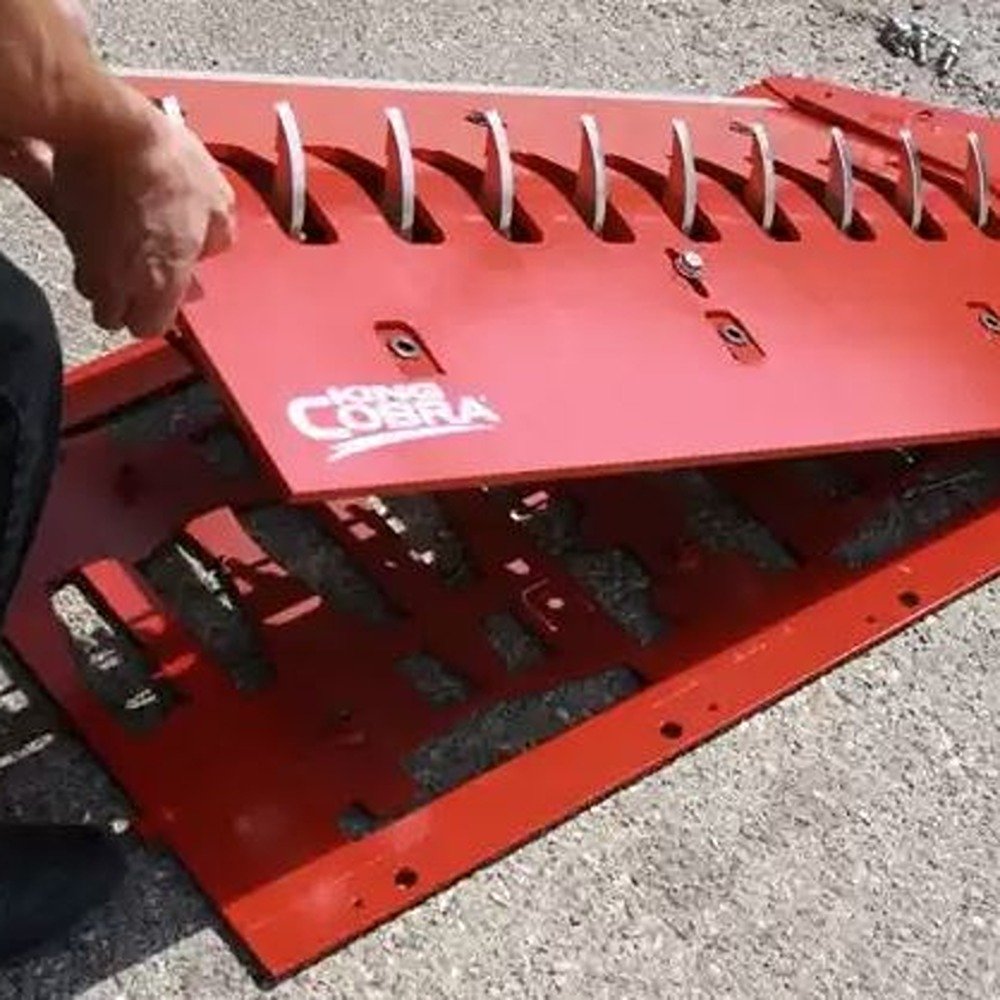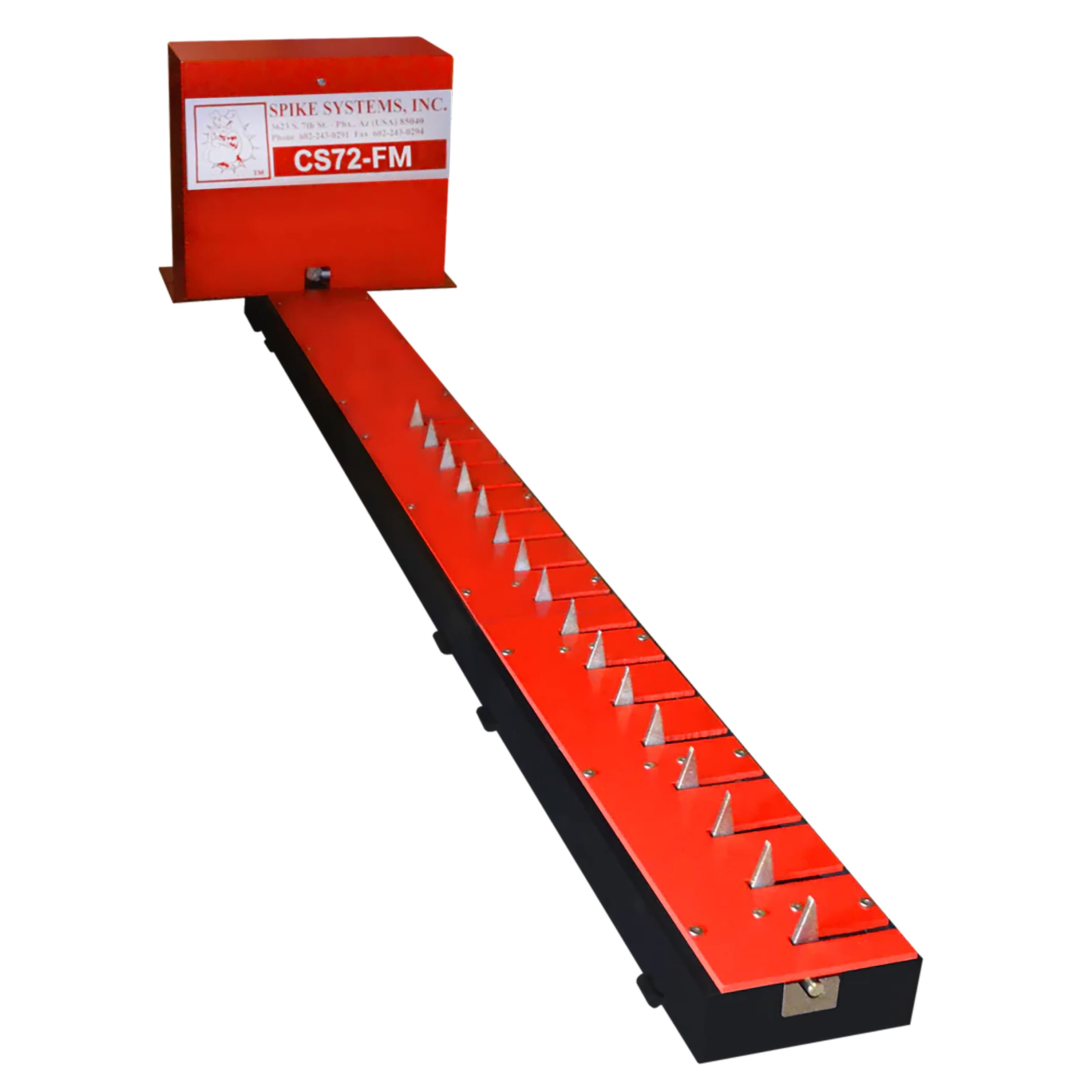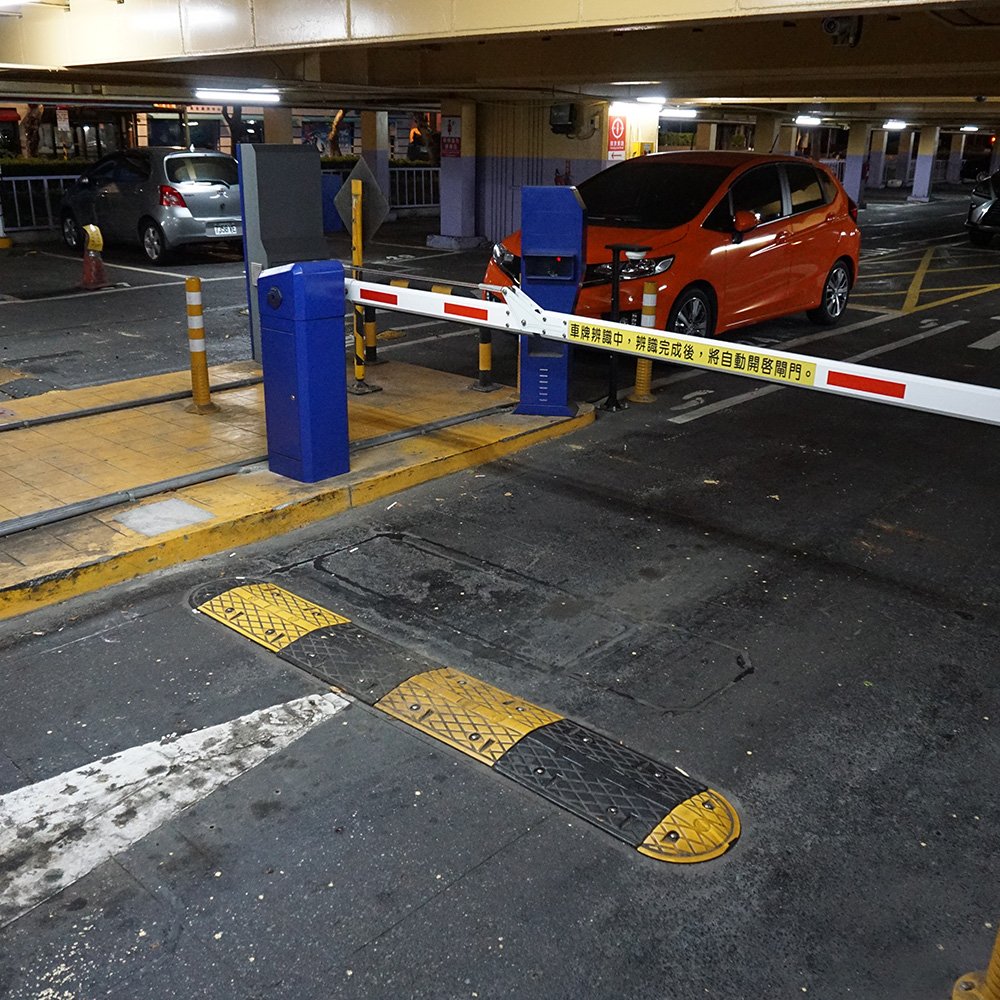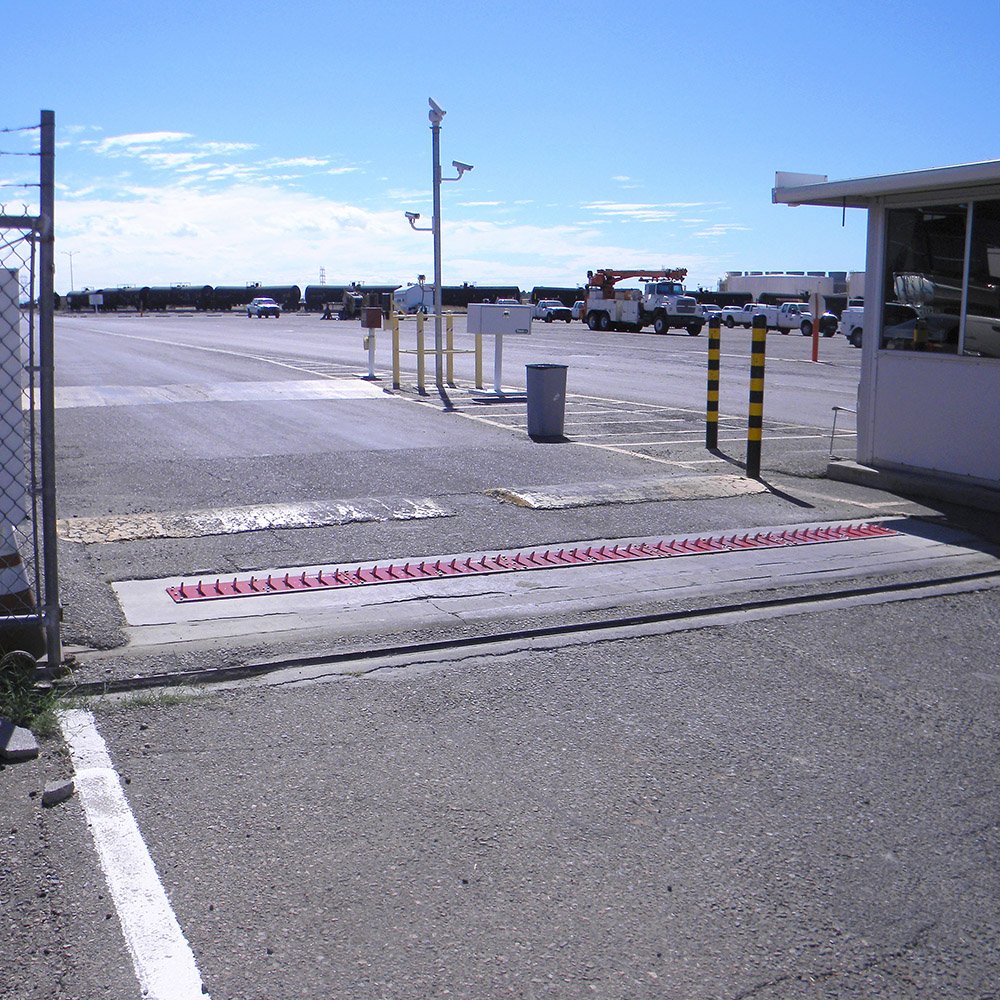What Is A Traffic Spike System?
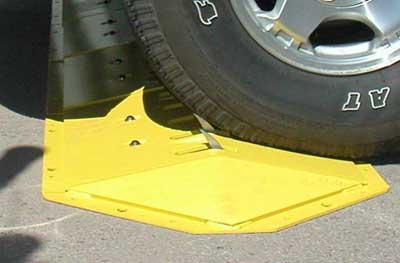
Traffic spike systems are a method of access control used worldwide to help restrict vehicular access to certain areas of facilities or properties. Traffic spike systems are built to allow vehicles to pass in one direction safely while preventing any traffic from accessing the area in the opposite direction, providing an incredibly effective and low-cost access control method. One way manual traffic spikes are designed so that when a vehicle passes over the spike strip in the correct direction, the tires safely roll over the smooth side of the spikes. In contrast, if a vehicle passes over the unit in a restricted direction, the teeth puncture the tire and immobilize the vehicle.
Spike Strips, Tiger Teeth, Road Sharks
Spike strips are known worldwide by many names, including tiger teeth, saber teeth, road blockers, road sharks, tire rippers, alligator teeth, tire cutters, tire disablers, and many others. All of the spike systems that Tiger Teeth sells are built right here in the United States, providing many jobs to hard-working Americans.
Manual & Motorized Traffic Control
There are both standard manual spike strips as well as complete motorized traffic control systems which include a spike strip, barrier arm, and a wide range of optional accessories (such as keypads, card readers, intercoms, telephone devices, CCTV, cameras, loops and more). Both types of spike strips are available in either surface-mounted systems that can quickly be installed on the roadway's surface or in-ground units whose installations are flush with the roadway.
Traffic Spike Safety Tips
Traffic control systems can greatly help protect your assets and property. However, their use can also be a risk and liability concern. Proper safety measures must be taken in installing and using a traffic spike system. Below are 12 recommended dos and don'ts of safe traffic spike system operation and installation to help you avoid mistakes that could result in an unsafe system. Following these tips can help ensure that the traffic spike system damages no people or equipment. Download our Maintenance Guide for additional information on how to prolong the life of your Traffic Spike System.
Traffic Spike System Do's & Don'ts
Clearly Warn Pedestrians And Drivers About Potential Danger
The area must be marked with at least a lighted or reflective warning sign. This is very recommended, especially as it is required by law in many locations. Illumination of the traffic spike teeth, especially in areas with adjacent pedestrian traffic, is highly encouraged for an added level of safety. Remember, it's never a bad idea to have additional signs or pavement markings to increase awareness of potential danger and reduce the property owner's liability.
Install In An Area With High Visibility
Traffic spike systems must be installed in a highly visible area to ensure drivers' safety. Traffic control systems should never be installed in blind spots, directly around corners, or halfway down a one-way road. Pretty much anywhere, a driver can not be properly forewarned of the potential danger to their vehicle.
Consult Experienced/Trained Professionals On Placement
The best layout for your property will depend on the width of the traffic lane that the units will be installed on. Please contact us (toll-free at (888) 378-1157 or email at sales@tigerteethstore.com) with your site specifications so we can recommend the best system for your site. Problems can result from the improper spacing of traffic controllers across a traffic lane.
Add Speedbumps Before Traffic Controllers When Extra Speed Control Is Desired
Traffic must be slowed to a maximum of 5 MPH before crossing the spike system. If the traffic controller does not automatically slow down traffic to this speed, it will be necessary to install a speed bump before the unit. Accidents, as well as extreme wear and tear on the unit, is possible if traffic is now slowed down to the appropriate speed.
Make Sure The Traffic Controller You Choose Is Appropriate For The Application
Some facilities, such as a hospital and emergency room, where people are likely distracted and agitated, might not be an appropriate place to install a traffic spike system. Traffic controllers should only be used in a parking situation or other places where traffic can be slowed to a maximum of 5 mph before crossing over the unit.
Leave Proper Drainage Channels Below In-Ground Units
You must allow adequate drainage channels below in-ground traffic controllers so that water will not gather beneath the unit during normal weather conditions. The placement area of an in-ground traffic spike system should be excavated 24-36 inches deep, depending on the annual rainfall of your area. Use cement blocks as a base, placed on top of crushed rock, to position the top plate of the traffic controller at a level flush with the pavement surface.
Install In A Way That Traffic Flows Over Spike Teeth At A Strict 90-Degree Angle
Traffic controllers must be installed so traffic flows over the teeth at a strict 90-degree angle (perpendicular to the teeth). Complete vehicle alignment and perpendicular passage over the controller must be assured for both the front and rear tires. Failure to follow this guideline will result in extreme wear and tear on your unit and the puncturing of tires traveling in the correct/allowed direction over the teeth.
Traffic Spike System Don'ts
Don't Install On A Curve
A traffic controller installed on a curve does not allow enough room before and after the unit for all vehicles to cross straight over them. There must be enough straight roadway before and after the unit to allow vehicles that have just completed a turn or slope to straighten out. Hence, they're exactly perpendicular to the teeth. Fifteen to twenty feet of space in front of the unit is a good rule. Not following this guideline may severely damage your unit and puncture the tires of traffic traveling in the correct direction over the spikes.
Don't Install On Uneven Surfaces
Surface-mounted units must be installed on a level, even surface with no welts, bumps, or dips beneath them. In-ground units must be installed with a level drainage bed. When installed properly, an in-ground unit will be completely level with the road surface.
Don't Install On Inappropriate Road Surfaces Such As Brick, Gravel, Or Dirt
Traffic controllers should only ever be installed on a level concrete or asphalt roadway. Brick, dirt, gravel, and other road surfaces are not appropriate installation surfaces. If you're installing the spike system in an inappropriate road surface area, a level concrete pad should be laid at the point of installation, stretching at least 10 ft from the unit.
Don't Install In An Area That Has A Large Amount Of Dirt, Debris, Or Gravel
If the area surrounding the installation has a lot of dirt, debris, or gravel, it is highly recommended that a concrete pad be installed at the point of installation and the immediately surrounding area to reduce the number of materials getting inside the spike system.
Don't Forget To Properly Maintain The Unit
To ensure your traffic controller has a long life of functioning properly, it is essential to be familiar with and follow through with the maintenance requirements of the unit. Proper maintenance consists of periodic inspection and removal of leaves, dirt, gravel, or other materials that may have become lodged inside the unit. How often this needs to be done will depend on your geographic area and the conditions at your installation site.

